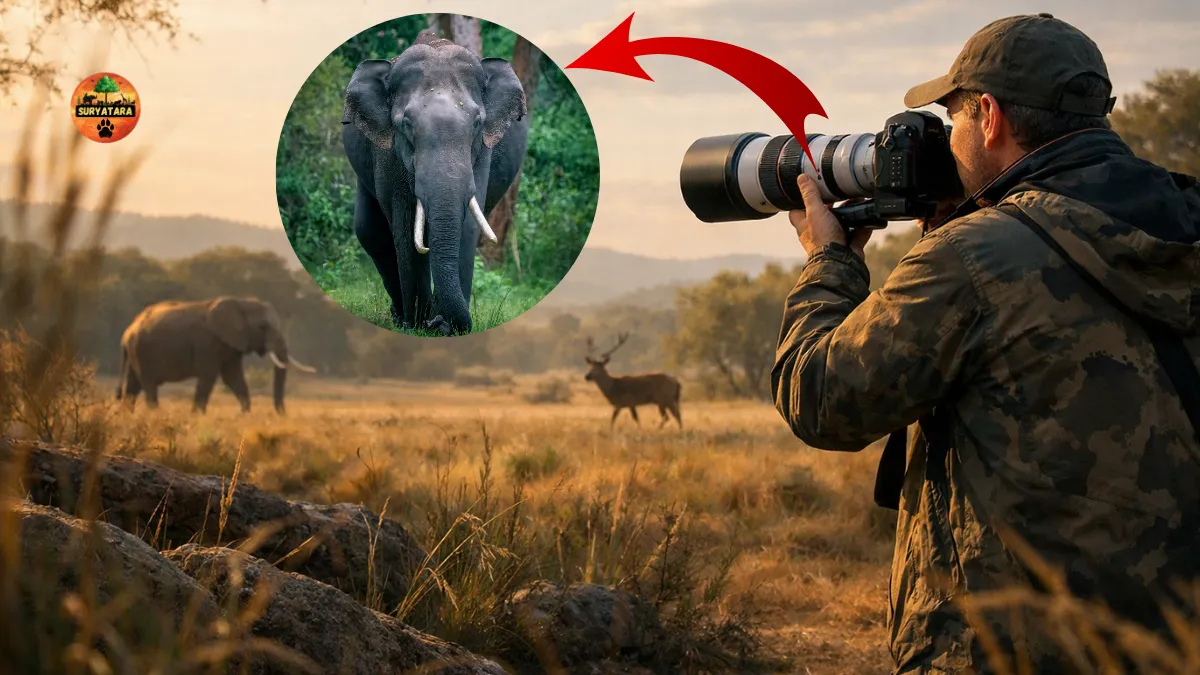Elephant’s digital identity is no longer just an idea—it’s now a reality in Madhya Pradesh. In a first-of-its-kind initiative, Bandhavgarh Tiger Reserve has introduced a new digital project aimed at identifying and tracking wild elephants using individual photo-based codes. This innovative step is expected to improve wildlife conservation and make it easier to monitor elephant movements across the reserve.
A Big Step in Digital Wildlife Management
As part of India’s growing Digital India mission, technology is now helping not just people, but also wildlife. The Elephant ID project, launched at Bandhavgarh National Park in Umaria district, is using digital tools to count and track elephants in real-time. This marks the first time that wild elephants are being given unique digital identities in a tiger reserve in Madhya Pradesh.
Permission for the project has been granted by the Principal Chief Conservator of Forests (Wildlife), and it is being carried out jointly by the tiger reserve management and elephant experts. Safety remains a top priority during this process, both for the forest team and the elephants involved.
How the Elephant’s Digital Identity Is Created
Whenever elephant activity is reported in any of the 139 beats across nine zones of Bandhavgarh Tiger Reserve, a special team of experts is dispatched to the location. This team takes clear photographs of various parts of each elephant’s body, including the head, ears, back, and tail. These photos are then analyzed on a computer to identify unique physical features.
Based on this analysis, each elephant is assigned a special digital code, such as “E-1”, “E-2”, and so on. This code becomes the elephant’s unique ID, making it easier to track and record its movements, behavior, and group association.
Why Elephant Identification Matters
Until now, elephant population figures were based on estimates. With the help of elephant’s digital identity, forest officials can now accurately count the number of wild elephants in the region. This also helps in:
- Tracking herd movement patterns
- Identifying which elephants belong to which groups
- Pinpointing areas with high elephant activity
- Reducing human-elephant conflict
Knowing exactly where elephants are and how they behave allows authorities to take timely preventive measures to avoid conflict with local communities.
Technology Meets Conservation
According to Anupam Shah, the Director of Bandhavgarh National Park, this new project is not just about numbers—it’s about understanding elephants better. The goal is to use this digital database to protect elephants, ensure their safety, and improve wildlife management strategies.
This initiative also represents a powerful blend of modern technology and environmental research. It shows how digital solutions can play a vital role in preserving wildlife and managing protected areas more effectively.
A Model for Other Wildlife Reserves
The success of the elephant’s digital identity project in Bandhavgarh could inspire similar efforts across India. Other tiger reserves and national parks may adopt this model, creating a nationwide digital database for elephants and possibly other wild animals. This would lead to better conservation practices, more effective protection plans, and stronger coordination among forest departments.
Also read: Bandhavgarh Tiger Reserve Ticket Price: Complete Guide Before You Plan
Conclusion
The creation of elephant’s digital identity in Madhya Pradesh is a shining example of how innovation and conservation can go hand in hand. By using digital tools to understand and protect these majestic animals, India is taking an important step toward modern and responsible wildlife management. As this project grows, it may set the standard for elephant conservation not only in Madhya Pradesh but across the entire country.











